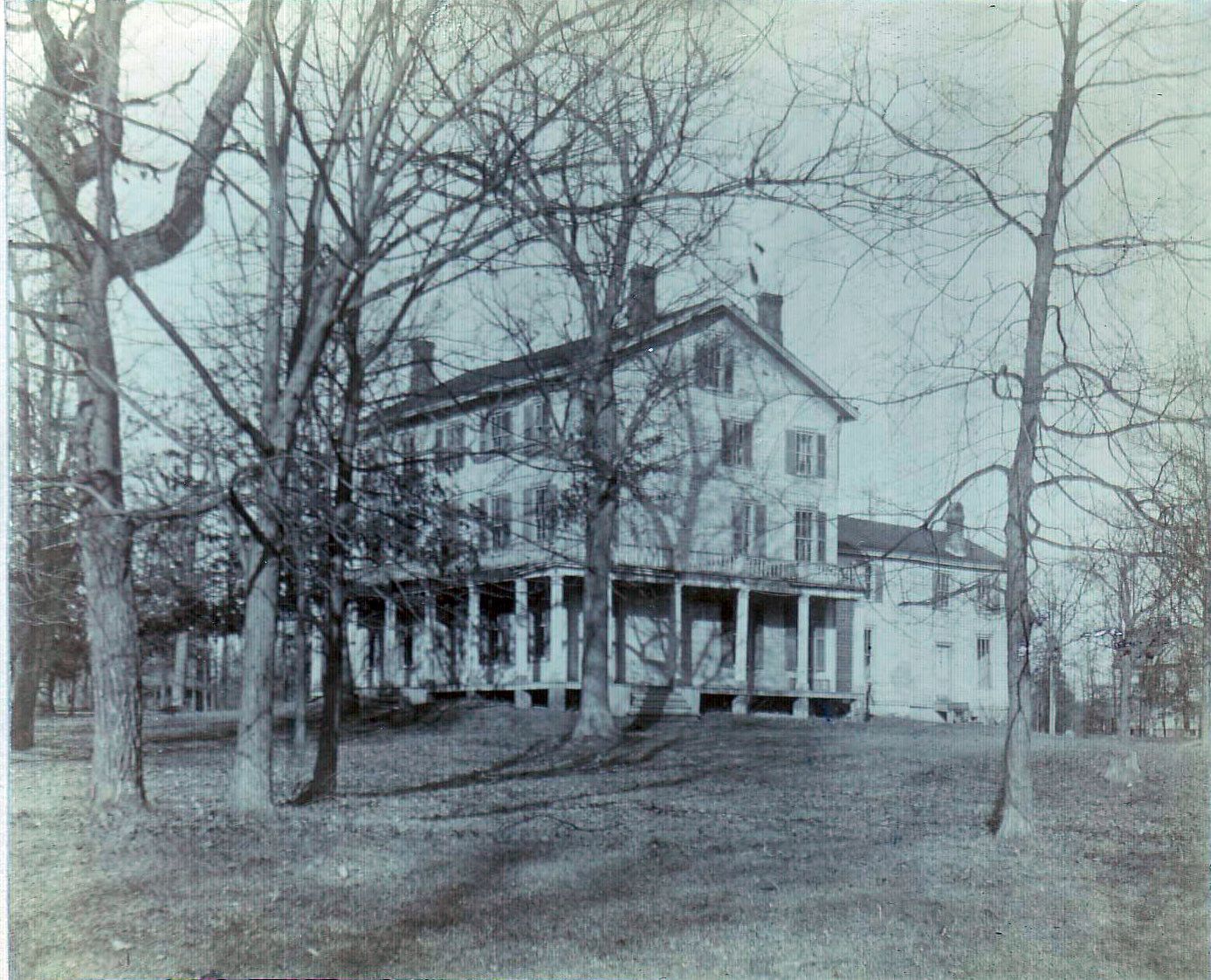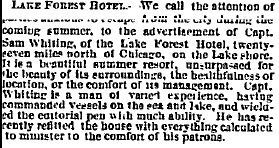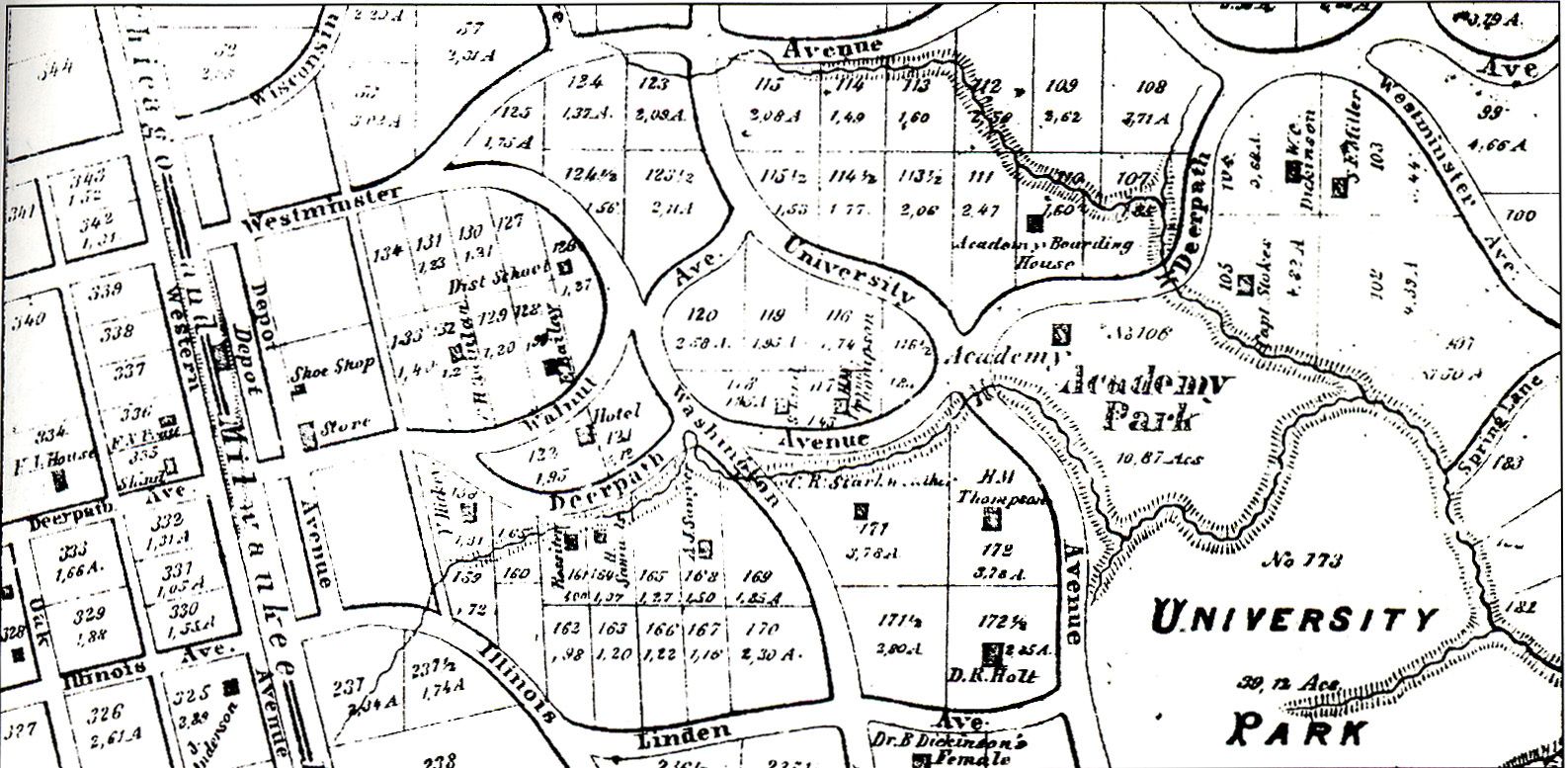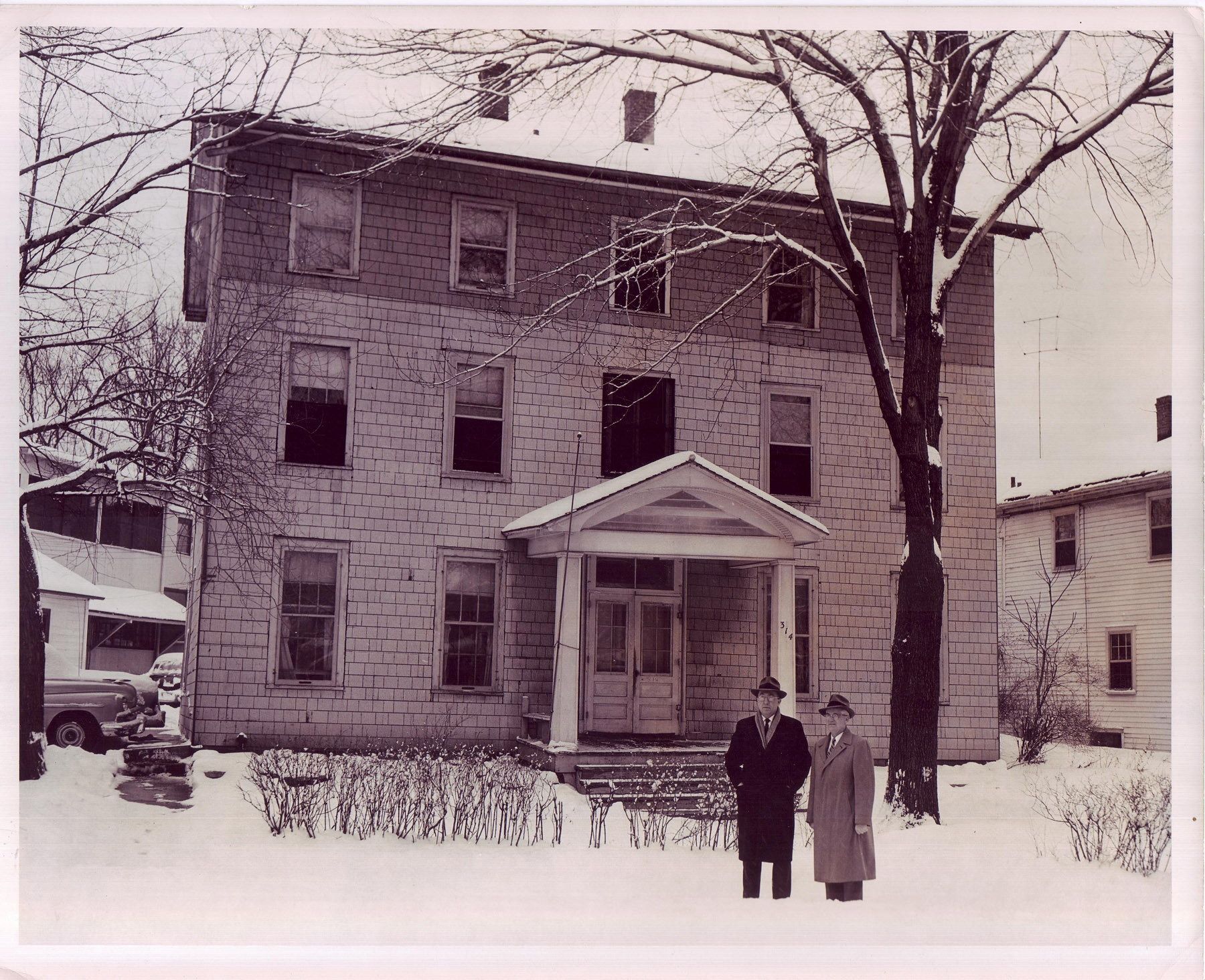"Old" Hotel: The Hotel that Launched a Community
Walnut and Washington, Lake Forest

Southwest view of the “Old” Hotel in today’s Triangle Park.
Location: Westminster and Walnut, Lake Forest
Everyone knew the place to be was the Lake Forest Hotel in 1858. When the three-story, white frame structure opened in the summer, it was the prospective town of Lake Forest's first public building and built at a cost of $6,400 from a design by architect Asher Carter. The project was commissioned by the Lake Forest Association, which had purchased 1300 acres of surrounding land to found Presbyterian institution of learning and adjacent town. The building stood in present-day Triangle Park, at the confluence of Walnut, Deerpath, and Washington roads.
In a way, the hotel launched the community: it was here that Lake Forest officially became a city. In 1861, 29 men met at the hotel and voted to approve the Charter of the City of Lake Forest.
Everyone knew the place to be was the Lake Forest Hotel in 1858. When the three-story, white frame structure opened in the summer, it was the prospective town of Lake Forest's first public building and built at a cost of $6,400 from a design by architect Asher Carter. The project was commissioned by the Lake Forest Association, which had purchased 1300 acres of surrounding land to found Presbyterian institution of learning and adjacent town. The building stood in present-day Triangle Park, at the confluence of Walnut, Deerpath, and Washington roads.
In a way, the hotel launched the community: it was here that Lake Forest officially became a city. In 1861, 29 men met at the hotel and voted to approve the Charter of the City of Lake Forest.

Article advertising the Lake Forest Hotel in the Chicago Daily Tribune on April 26, 1866.
The Lake Forest Association needed a place of lodging for both prospective land buyers visiting from Chicago and the construction workers who were building the town’s infrastructure and new homes. Visitors got off the train from Chicago near Deerpath and had to walk through a clearing to the hotel. It was a popular picnic site for summer day visitors from Chicago. All early community functions, from Sunday School classes to City Council meetings, took place at the hotel.
The white frame building served as the site of the first church services in Lake Forest which were conducted by Reverend Ira. W. Weed of Waukegan. On pleasant summer Sundays, Reverend Weed held worship outside in the shade of the oaks. In addition, Lake Forest Academy classes were held in the hotel from 1858 until January 3, 1859 when the Academy building on what is now the nearby Lake Forest College campus was completed. Academy students continued to eat their meals at the Lake Hotel and it was here that one voraciously hungry student, John C. Patterson, consumed seventeen pancakes in one sitting.
A Mrs. Everett was an early landlady and presided over the hotel, which featured a balustrade front stairway, a second floor veranda accessed through glass doors and third floor rooms decorated with wallpaper. Soon a rear addition was added. The hotel’s second owner was Samuel Whiting, a sea captain who had accompanied Elisha Kent Kane’s Arctic expedition to rescue the explorer Sir John Franklin who had attempted to chart and navigate a section of the Northwest Passage in the Canadian Arctic.

This 1862 map shows the outline of the Lake Forest Hotel building in the center of what is now Triangle Park (at the confluence of Walnut, Deerpath and Washington).
When another Lake Forest Hotel was built in 1870, closer to the lake, this was designated the “Old Hotel” and the other the "New Hotel" to distinguish the two. A sumptuous six stories, 60 rooms and $80,000, this “New” hotel put the “Old” one out of business, and the building became a boarding house. (However, the "New" Hotel itself quickly fell into debt and closed its own doors after just a few years). In 1877, the former New Hotel building burned down; it was then serving as classroom space for Lake Forest University, but having been designed for warm-weather use, it had poor heating infrastructure. Ironically, the Old Hotel came to the rescue, housing Lake Forest University classes and students until a new college building (Young Hall) could be constructed.
When the original Lake Forest Association had disbanded in 1870, its founders disbursed then-unsold property and in this way, the Old Hotel ended up in the ownership of Henry R. Pierson of Albany, NY who refused until his death to sell it. It gradually became a run-down temporary rooming house and offices for people who soon moved on to better quarters. Over the years, it became a public eyesore due to neglect.

Former “Old” Hotel in 1954, then on Wisconsin Avenue.
After Mr. Pierson’s death in the 1890s, his heirs sold the property to a group of Lake Forest residents, led by Rev. James G. K. McClure, who banded together to purchase it, and then gave it over to the city. Interestingly, the Pierson heirs included a stipulation in their sale of the land that required it to be used for charitable, educational, benevolent or public park purpose – otherwise it would revert to Lake Forest College. The former Old Hotel building was then moved to a site on Wisconsin Avenue, where it stood for many years, at some point it acquired the dubious nickname "The Roach."
Lake Forest resident John Babicz recalls living there for a few weeks as child while his father switched jobs. "[My father] had taken the caretaker position with Lilace Barnes, (now the Glen Rowan House at 500 N Sheridan Rd.) I was about 10 yrs old at the time, for some reason we couldn't move into the gardeners cottage right away. We moved into the Old Hotel Boarding House on Wisconsin Ave. We lived in a studio apartment, seems I remember one room with a bathtub to one side, maybe a hot plate, I don't remember an oven. We were not on the 1st floor, maybe the 2nd or 3rd. I don't remember an elevator there. I think we lived there only a few weeks. I was student at Gorton. I remember going to Maxi Cohns store for penny candy. I seem to remember the American Legion building close by. I also remember going to the Good Humor truck an Don Dumont. He parked east of the railroad tracks on Deerpath."
In 1973 – the building’s 116th year – it was razed due to its dilapidated condition.